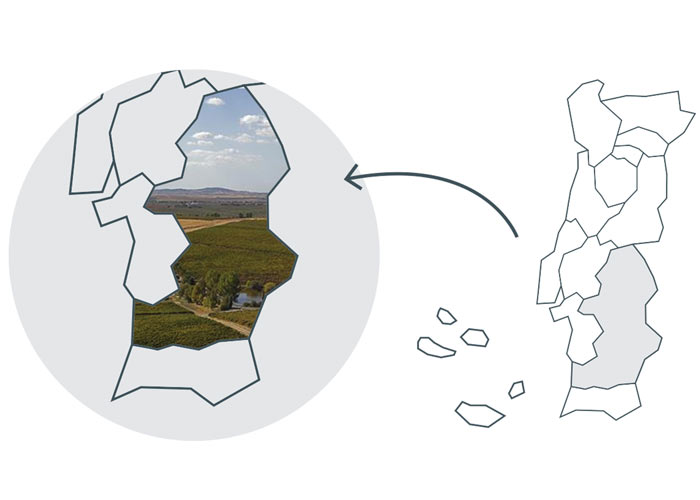Wine regions
Portuguese wine regions
Alentejo
A bit of history
There are no records of the exact day the first grapes were crushed to produce wine in Alentejo. What is certain is that it was a long, long time ago. Portugal, one must not forget, has the oldest land border in the world, meaning that we have a lot of history behind us, including a lot of different cultures and religions as tenants – or landlords, depending on time and perspective.
What does ‘Old World’ exactly stand for? Phoenicians, Greeks, Romans, Arabs, Christians – all of these cultures had their share of Alentejo on their mugs over the centuries – well, maybe not the Arabs, as they’ve ultimately censored wine production at a point of their ruling part of our territory. Take that for sinful!
Luckily for us wine lovers, History saw Alentejo (and the Algarve) claimed back by the Portuguese people – and wine production came on right after. Today, after centuries of highs and lows, Alentejo is paving its way as one of the most exciting wine regions in Portugal – proof to that is the fact that nearly 50% of the wine consumed in Portugal comes from this region. So, it’s no wonder that, while Alentejo covers about a third of Portugal, winemakers in the remaining two-thirds can often be heard to complain about the popularity of Alentejo wines.
The reds, easy drinkers, rich and fruity, are the darlings of Lisbon cafés and restaurants, also to be found on wine lists the length of the country. There are quaffing wines, but also fine wines, especially in the red department. Whites are more difficult in this hot climate, but some very good ones are made, given the right place, and/or appropriate skill in vineyards and cellar.
It’s a short drive up from the cool of the Algarve, over the hills and into the hot southern part of the Alentejo (or seriously cold, should it be winter). Most of the Alentejo consists of undulating plains and gentle hills, with serious mountains only in the north east, where, near the town of Portalegre, the São Mamede mountain range rises up by the border with Spain, and the air becomes cooler and the countryside greener. Soils vary greatly: schist, pink marble, granite, limestone, often laid upon a sub-layer of water-retaining clay.
What to expect?
A plain horizon, a smooth breeze and a lot of sun: altogether these provide a great background to relaxing vacations and, more importantly to our cause, to growing great wines.
Reds
Rubi red, full-bodied, warm, rich in tannins and topped with red berries’ aroma.
Aragonez (Tempranillo) is the most widely-planted red grape. The red-fleshed French grape Alicante Bouschet is often the inky, treacley backbone of red blends. Alfrocheiro, Castelão and Trincadeira also have valuable parts to play, with Moreto, Tinta Caiada and Tinta Grossa padding out some blends.
Common varieties: Alfrocheiro, Alicante Bouschet, Aragonez, Cabernet Sauvignon, Castelão, Syrah, Touriga Nacional, Trincadeira.
Whites
Balanced, usually hay-colored, citric and with a fruity aroma (namely tropical fruits).
The white Antão Vaz is the star grape of the region, with good acidity and tropical fruit flavours. It also responds well to barrel-fermentation. Arinto and Roupeiro also offer precious acidity; white Diagalves, Manteúdo, Perrum and Rabo de Ovelha make up the blends.
Common varieties: Antão Vaz, Arinto, Fernão Pires, Roupeiro
***
Adapted from: Wines of Portugal, Instituto Português do Vinho e da Vinha, CVR Alentejo

approx. £9.02
White WineE.A.Organic 2021, 75clRegional Alentejano
White: Aromatic
13.5%

